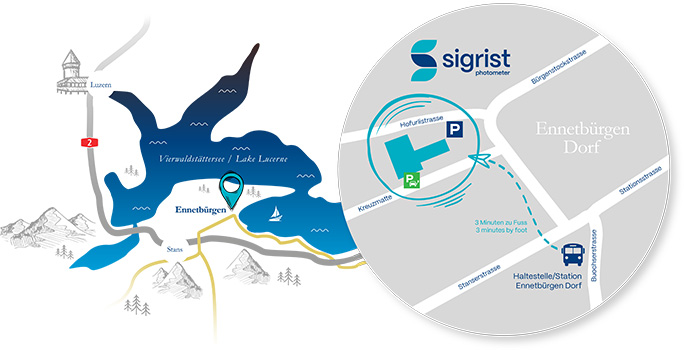The light scattered by a particle and therefore the turbidity of a given suspension depends heavily on the size of the particle in question.
If the particle size in a suspension changes, either the number of particles or the aggregate particle mass may remain constant. The former situation (constant number of particles) occurs in the case of crystal growth or water build-up, the latter (constant aggregate mass) in the case of decomposition or agglomeration. This distinction is important, because the effects of the two cases on scattered light intensity are very different.
The following Figure illustrates how the scattered light intensity of various materials depends on particle diameter, assuming a constant number of particles. Above 0.3 µm, the scattered light increases in proportion to the square of the (effective) section of the particles. In the case of extremely small particles of less than 0.3 µm, the scattered light intensity increases in proportion to the square (d2 of the volume, i.e. raised to the sixth power of the diameter (d6 (dipole radiation).

Fig. 33: Scattered light intensity for a constant number of particles. n=refractive index; wavelength 550 nm; 90° angle; particle size distribution: log. standard dist. σ = 0.6
Where the aggregate mass remains constant, the picture is entirely different (Fig. 34). Above the maximum of 0.3 µm, the scattered light intensity declines in proportion to 1/d because the number of particles declines in proportion to the cube root even though their diameter increases in relation to the square. Below 0.3 µm, the scattered light intensity increases in proportion to d cubed.

Fig. 34: Scattered light intensity for constant material volume. n=refractive index; wavelength 550 nm; 90° angle; particle size distribution: log. standard dist. σ = 0.6
In the real world, there is practically no such thing as a suspension with just one particle size (monodisperse). Normally one encounters a distribution of particle sizes (polydisperse). Nevertheless, the behaviour remains essentially as depicted in the above graphs.


